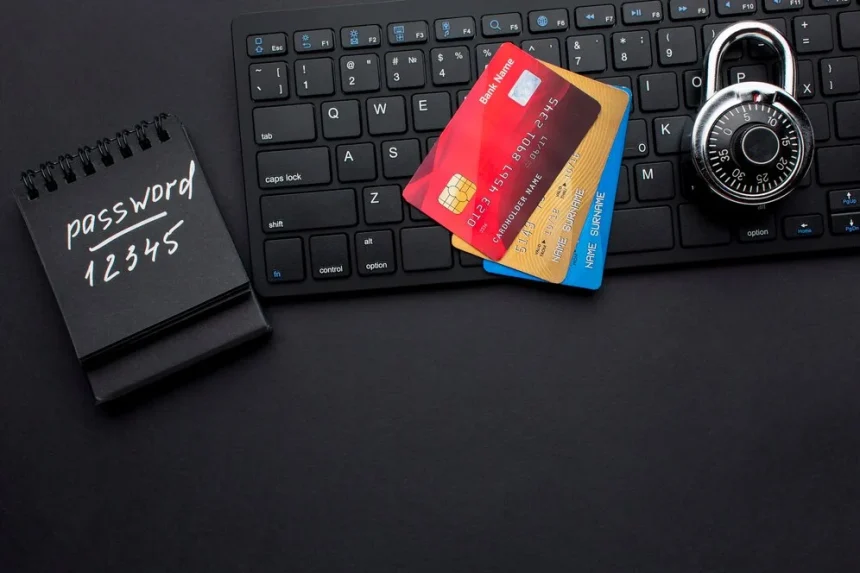In today’s digital age, online banking is not just a convenience—it’s a necessity. But with this convenience comes the critical responsibility of ensuring your financial data remains secure. Whether you’re a financial literacy seeker, a business owner, or a savvy tech user, understanding how to protect your online banking activities is paramount.
In this post, we’ll explore the world of online banking security, providing practical tips and insights to help you bank safely and confidently.
The Advantages of Online Banking
Online banking offers unparalleled convenience.
- It enables users to check their account balance, transfer funds, or pay bills from the comfort of their home or office. No more rushing to the bank during your lunch break or waiting in long lines. For business owners, this accessibility translates to better time management and more streamlined operations.
- The cost-effectiveness of online banking is another major benefit. Traditional banking often comes with fees for in-person transactions or maintenance. However, many online banking services offer lower or no fees, helping you save money.
- The time saved by avoiding physical bank visits can be redirected to more productive personal and professional endeavors.
- Online banking provides real-time access to financial data. This immediacy allows for better financial management and quicker decision-making. Whether it’s tracking business expenses or managing personal finances, having up-to-date information at your fingertips is invaluable.
Common Risks in Online Banking
Despite its many benefits, online banking is not without risks. Cyber threats such as phishing, malware, and unauthorized access are pervasive and can have severe consequences. Phishing attacks, for instance, trick you into providing sensitive information through seemingly legitimate emails or websites. Malware can infiltrate your device, capturing keystrokes or redirecting you to fake banking sites.
Unauthorized access is another significant threat. Cybercriminals may exploit weak passwords or security flaws to gain access to your accounts, potentially siphoning off funds or stealing personal data. Real-life examples abound, like the 2017 Equifax breach, where millions of consumers’ data were exposed, leading to widespread identity theft and financial loss.
Understanding these risks is the first step in safeguarding your online banking activities. By being aware of the potential dangers, you can take proactive measures to protect your financial information.
Best Practices for Secure Online Banking
Personal Finance Editor at CreditNinja, who stresses the importance of vigilance in online banking: “In today’s digital world, safeguarding your financial data is more critical than ever. Simple steps like using strong, unique passwords and enabling multi-factor authentication (MFA) can provide significant protection against unauthorized access. It’s about creating multiple layers of security to protect your accounts from potential threats.”
To ensure your online banking experience remains secure, follow these best practices:
Use strong passwords. A password is your first line of defense. Create strong passwords by putting together combinations of alphabets, special characters, and numbers. Avoid using easily guessable information.
Turn on multi-factor authentication (MFA). MFA puts an extra security layer by requiring multiple verification steps, such as a code sent to your phone. This makes it harder for cybercriminals to access your accounts, even if they have your password.
Monitor your accounts regularly. Regularly check your account statements and transaction history. Early detection of unauthorized activity can prevent significant financial loss. If you notice any suspicious activity, notify your bank immediately.
Recognize and avoid scams. Be wary of unsolicited emails, texts, or calls asking for personal information. Legitimate financial institutions will never request sensitive information through these channels. Always verify the source before clicking on any links or providing information.
Mayerle adds, “Phishing scams have become increasingly sophisticated, making it vital for individuals to be cautious about any unexpected communication that requests personal or financial information. If something feels off, trust your instincts and contact your bank directly using a verified phone number or email address.”
The Role of Technology in Enhancing Online Banking Security
Technology plays a crucial role in fortifying online banking security. Modern banks employ various advanced technologies to protect their customers’ data.
According to Mayerle, “Embracing technologies like biometric authentication and encryption can significantly enhance your online banking security. These tools help ensure that only you have access to your accounts, and they make it much harder for cybercriminals to intercept or misuse your data. Staying informed about the security measures your bank employs can also help you make smarter choices about where to bank and how to protect your information.”
Biometric authentication, such as fingerprint or facial recognition, ensures that only authorized users can access accounts. Unlike traditional passwords, biometric data is unique to each individual, significantly reducing the risk of unauthorized access.
Encryption is another essential technology. It transforms your data into unreadable code during transmission, ensuring that it remains unintelligible to cybercriminals even if intercepted. Look for banking websites that use HTTPS, indicating that they employ encryption protocols to protect your data.
Artificial intelligence (AI) and machine learning are also revolutionizing online banking security. These technologies can detect unusual account activity or transaction patterns, flagging potential fraud in real time. By continuously learning and adapting, AI provides a dynamic defense against evolving cyber threats.
Steps to Take If Your Online Banking Security Is Compromised
If you suspect your online banking security has been compromised, act swiftly to mitigate potential damage. First, change your passwords immediately. Use a different device that you know is secure to avoid further exposure.
Next, contact your bank to report the incident. They can offer guidance on securing your accounts and may monitor them for suspicious activity. Keep detailed records of all communications and actions taken, as these will be crucial if you need to resolve disputes or recover lost funds.
Stay informed about security breaches and updates from your bank. Regularly check your credit report to identify signs of identity theft or unauthorized activity. By remaining vigilant and proactive, you can recover from security incidents more efficiently.
If your debit card has been put on hold due to suspicious activity, it is essential to take immediate action. Most banks have measures in place to remove hold on a debit card. So, contact your bank to report the issue and follow their instructions. This may involve providing additional information or verifying recent transactions.
Conclusion
Navigating the world of online banking safely and securely is essential for financial literacy seekers, business owners, and savvy tech users alike. By understanding the risks and implementing best practices, you can protect your financial data and enjoy the many benefits of online banking.
Stay informed about the latest security technologies and trends, and don’t hesitate to seek assistance if your security is compromised. With vigilance and proactive measures, you can ensure your online banking experience remains safe and secure.





